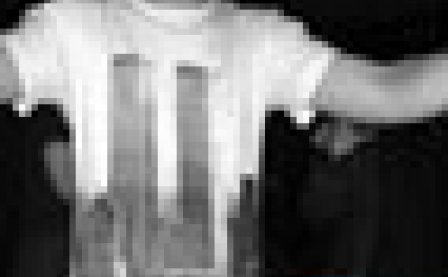German producer Ekkehard Ehlers has historically been worthy of note for his ability to bring music's hitherto tangential aspects to the forefront of his compositions, thus forcing the listener to confront the music from an altogether different perspective. Something of a musical theoretician, Ehlers utilizes a deconstructive approach that he frequently applies to pre-recorded music, whereby original pieces (or fragments of original pieces as the case may be) are presented to the listener as something other than that which was the artist's original intention. There is something to be said for an artist who can make tape hiss, vinyl static, and incidental background noise sound not only interesting, but engaging to boot. On A Life Without Fear, Ehlers turns his musical scalpel on the traditional American blues idiom, which he proceeds to dice into its constituent components, sorting them out, and serving them to us on aural dissection trays. As a secondary consideration, Ehlers uses A Life Without Fear as an opportunity to critically examine American culture ”” particularly with regard to how its approach to war has shifted so dramatically since the Great War of the early 21st Century.
Without engaging in a full-on track-by-track analysis of A Life Without Fear, Ehlers' present modus operandi should at least be touched upon. Each of the album's tracks is based on a particular characteristic ”” or elemental component ”” of classic American blues. Its relationship to African music, for one, is examined on "Misorodzi," while the relationship between blues and jazz is laid out for us on "Die SorgeGeht über den Fluss" and, to a lesser degree, "A Second Fire." The opening and closing tracks, "Ain't No Grave" and "O Death," respectively, as well as the haunting and lugubrious "Strange Things," focus on the lyrical and vocal aspects of the blues. Ehlers includes both recently recorded vocal pieces ("Ain't No Grave") and ancient, 78-rpm-sourced tracks ("Strange Things") for our perusal. Additionally, the inclusion of "Maria and Martha," an acoustic folk instrumental, serves to remind the listener of blues' folk roots as well.
The title A Life Without Fear is itself used by Ehlers to illustrate a paradox. Perhaps Ehlers is stating the fact that, in a bygone era, war was an unfortunate but necessary means for achieving an ultimately peaceful end. In the 21st Century, however, an era of wars fought solely for political gain, an era of product-branded disasters for us to rally around, and an era where peace, we are told, is merely a tool for appeasement employed by the weak, A Life Without Fear is a lament for a society that has, in so many ways, ceased to exist. With this perspective in mind, Charles Haffer, Jr.'s lyrics on "Strange Things" take on a deeper resonance. Although some might consider the record one of Ehlers' more uneven releases, his death-obsessed take on the blues is, at the very least, an intriguing album that benefits from Ehlers' cultural distance from The United States.
1. Ain't No Grave
2. A Second Fire
3. Strange Things
4. Frozen Absicht
5. Die SorgeGeht über den Fluss
6. Nie Wieder Schnell Sagen
7. Misorodzi
8. Maria & Martha
9. Meeresbeschimpfung
10. Lazarus Signs
11. O Death
More about: Ekkehard Ehlers



